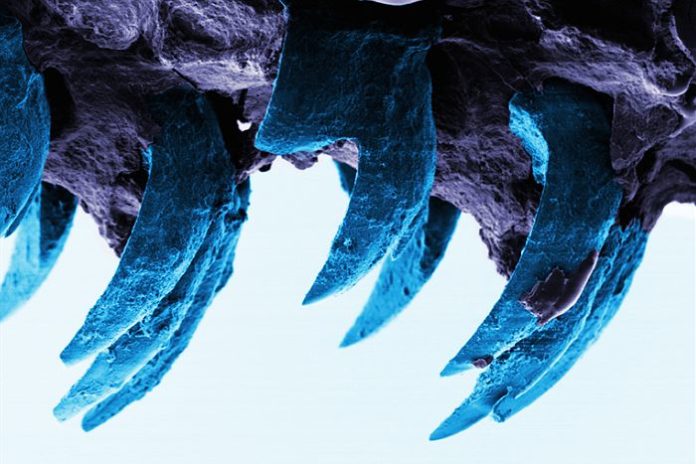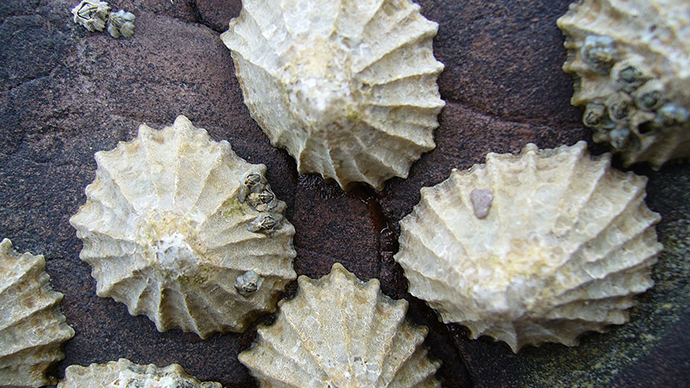
The teeth of limpets, small marine creatures famous for their tiny cone-shaped shells, have been declared as the world’s strongest known biological structure. The teeth, described in a new study in the latest issue of the Journal of the Royal Society Interface, are so tough that they can be used to make ships, F1 cars, hulls of boats and aircraft structures.
The study’s lead author Asa Barber, of the University of Portsmouth and Queen Mary University of London, noted, “until now we thought that spider silk was the strongest biological material because of its super-strength and potential applications in everything from bullet-proof vests to computer electronics, but now we have discovered that limpet teeth exhibit a strength that is potentially higher”.
The strength they calculated for the tooth material was, on average, about five gigapascals – some five times greater than most spider silk. This measurement is about the same as the pressure needed to turn carbon into diamond beneath the Earth’s crust. Alternatively, as Barber explained, it can be compared to a single string of spaghetti holding up 3,000 half-kilogram bags of sugar.
Barber and colleagues, Dun Lu and Nicola Pugno, cut ultra-small samples out of the teeth. The minuscule sizes of the material proved to be incredibly strong, which means limpets teeth stay the same strength no matter the size. Further analysis by the team, found that limpets teeth are composites made from mineral fibres known as goethite. The fibres are bound together in a ‘glue’ of chitin, a natural polymer.
“The strength of the tooth is due to the diameters of the fibres being below a particular size, which is about 60 nanometres, or over a thousand times thinner than a human hair,” explained Barber.
Limpets have rows of teeth on a tongue-like appendage called a radula, Barber added. The limpet sits on rock and rolls out its radula over the rock’s surface. “The teeth are under the radula to scrape over the rock surface. Algae on the rock surface are scraped toward the mouth of the limpet and this is how it feeds”.
“Limpets are the bulldozers of the seashore. The reason limpet teeth are so hard is that when they’re feeding, they actually excavate rock. In fact, if you look at their faecal pellets they actually look like little concrete blocks – because by the time it’s gone through their gut it’s hardened,” said an unsurprised Steven Hawkins.
You want to support Anonymous Independent & Investigative News? Please, follow us on Twitter: Follow @AnonymousNewsHQ






I love how the video they used don’t work.
American maths “3,000 ‘half’ kilogram bags” LMAO..
I know right xD instead of just 1500 1kg bags of sugar, typical murican math xD
Americans don’t know what the #^@% a Kilogram is. We are too stubborn to convert to something as logical as the metric system.